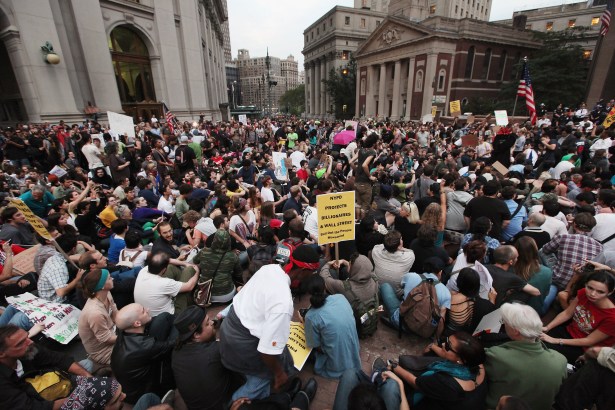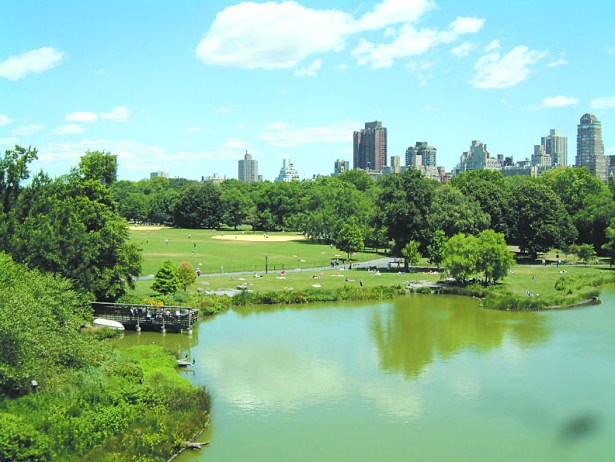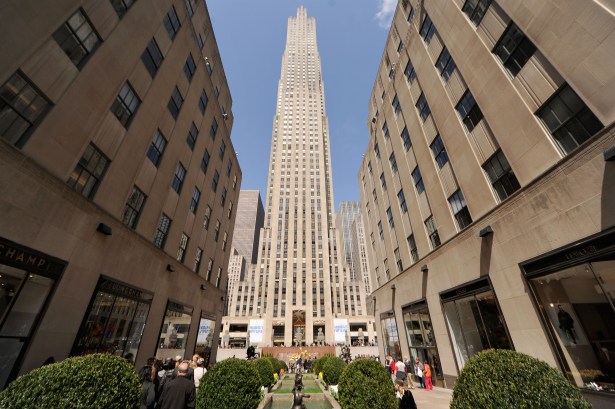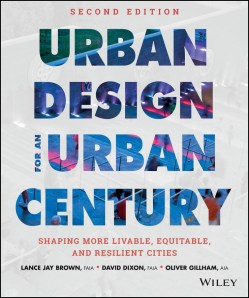13 NYC People, Buildings and Events that Shaped the World
By Tobias Salinger November 13, 2014 2:12 pm
reprints

With great density, comes great responsibility.
This is the coda of David Dixon, the noted architect who recently released the second edition of the book he co-authored with architects Lance Jay Brown and the late Oliver Gillham, Urban Design for an Urban Century (Wiley).
“The place that many people once considered the symbol of density’s failures” — a.k.a., New York City — “now sends the message: density works,” Mr. Dixon told Commercial Observer in an email. “The biggest obstacle to urban revival in many cities has been fear of density—and along with this fear, opposition to tall buildings, mixed-use development, downtown housing and many of the other essential elements of renewed urban growth.”
What Messrs. Dixon (FAIA and a senior principal at Stantec), Brown (FAIA and president of the New York chapter of the American Institute of Architects) and Gillham (AIA) have to say about urban planning, architecture and New York City are worth mulling over.
Commercial Observer selected 13 New York City mentions from the book and asked Messrs. Brown and Dixon for their views on how one of the world’s most famous cities has shaped the world we know today. (For the record, they liked our list, except they thought we left out City College and the New York City Housing Authority.) But here’s our great urban landscape as seen in Urban Design for an Urban Century.
The commissioners’ plan of 1811 laid out Manhattan’s modern design and laid the groundwork for other cities: “In the end, plans for the gridded cities of the United States responded more to the needs of the real estate developer than the interests of the designer or the democratic idealist.”

Central Park architects Frederick Law Olmstead and Calvert Vaux created the famous green space with both American and international forerunners in mind: “Olmstead and Vaux drew inspiration from popular pastoral urban cemeteries like Mount Auburn in Cambridge, Massachusetts, but great European parks like London’s Hyde Park and the Bois de Boulogne in Paris were equally influential models.”
Pioneering New York City cast-iron façade architect James Bogardus led the way in the mid-19th century for the steel structures we know today: “In the 1880s, experiments with ways of adding steel framing to structures in both New York and Chicago quickly bore fruit; within a decade, architects and engineers had begun to master the use of internal steel skeletons to support higher buildings without sacrificing the usable space on any floor.”
New York City architect Ernest Flagg helped introduce the setback with his design for the Singer Building in Soho: “He rebuilt an 1896 structure to serve as its base, and the resulting Beaux Arts building rose more than 600 feet above Manhattan. Flagg’s approach, which influenced other towers, including the Woolworth Building, impacted building regulations strongly.”
Speaking of regulations, New York’s 1916 zoning code set the tone for cities around the country: “The new code established specific building and land use districts and spelled out enforceable regulations for building sizes and uses within those districts. Zoning caught on quickly: within 10 years, 80 percent of U.S. cities had adopted zoning ordinances.”
The vast, car-inspired “Futurama” exhibit sponsored by General Motors at the 1939 World’s Fair in Flushing Meadows foreshadowed the upcoming move to suburbia: “Futurama unveiled an entirely different vision—a horizontal city rarely rising above three stories and spreading from horizon to horizon. Two decades after the 1939 fair, the United States would build a vast continental infrastructure that formed the underpinnings of a nationwide suburban metropolis.”

Rockefeller Center officially opened in 1933, at the dawn of a new era: “In many ways Rockefeller Center represents the archetypal work of purely American urban design. Everything about the complex celebrated twentieth-century industrial modernity, from the towers themselves, with their decorative arts and sculpture celebrating man and industry, to its nickname, Radio City.”
Legendary builder Robert Moses embodied the car-serving culture that came to the norm in post-war American cities: “Moses’s concept of urban renewal, which involved ‘rationalizing’ the city’s form to accommodate twentieth-century infrastructure, took precedence over all other considerations. He built expressways that sliced through neighborhoods in all five boroughs (and well into other parts of the state) and replaced thousands of units of traditional neighborhood housing with blocky high-rises inspired by architect Le Corbusier’s tower-in-a-park model.”
The 1963 demolition of the original Penn Station enraged preservationists but ultimately spread their message far and wide: “Once the preserve of a small number of wealthy Americans, the movement expanded dramatically during this period, as preservationists joined forces with community groups to protect endangered neighborhoods from highways and urban renewal projects. Within three years of the Penn Station debacle, New York City had put in place a landmarks preservation law and Congress had passed the National Historic Preservation Act.”
New Yorker Jane Jacobs’ 1961 book The Death and Life of Great American Cities presaged an urban movement that was still many years away: “In a sense she was a Cassandra; despite billions of dollars poured into destructive urban highways and urban renewal over four decades, the urban resurgence visible today largely took root in the traditional neighborhoods, historic districts and lively streets that she had chronicled and that preservationists and community activists struggled to save from urban renewal.”
The building of Battery Park City during the 1980s and ‘90s atop new land excavated from the World Trade Center site showed a new approach to large-scale development: “The clearly contextual pattern followed recommendations Jane Jacobs had made more than twenty years earlier. The project architecture borrowed heavily from the vocabulary of New York apartment buildings built earlier in the twentieth century, filling out the postmodernist and historicist details of the plan.”

David Owen’s 2004 New Yorker article “Green Manhattan” laid out a new understanding of cities as critical tools for cutting energy use: “Owen made a simple but divergent point: dense, compact urban communities use energy far more efficiently and generate far fewer emissions per capita than their suburban counterparts. Within a few years, this perspective had become the new standard, at least for planners and architects.”
The Occupy Wall Street movement exerted a political influence and an architectural one as well: “The larger debate sparked by the Occupy protests over a growing gulf between the rich and the poor, the corporate and the individual, also became a debate over public use and private space and the devil’s bargain that muddied those waters. The Arab Spring abroad and the Occupy movement in the United States spotlighted the often overlooked role that the connective tissue of open space plays in cities today.”


